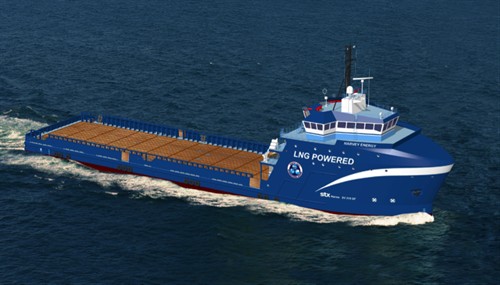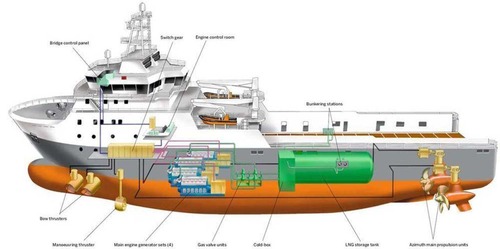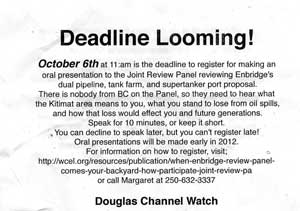Energy
The National Energy Board has approved KM LNG’s (also known as Kitimat LNG) application for an natural gas export licence.
A NEB news release says:
The National Energy Board (NEB or the Board) today approved an application by KM LNG Operating General Partnership (KM LNG) for a licence to export liquefied natural gas (LNG) from Kitimat, British Columbia to markets in the Asia Pacific region.
The export licence authorizes KM LNG to export 200 million tonnes of LNG (equivalent to approximately 265 million 10³m³ or 9,360 Bcf of natural gas) over a 20 year period. The maximum annual quantity allowed for export will be 10 million tonnes of LNG (equivalent to approximately 13 million 10³m³ or 468 Bcf of natural gas).
The supply of gas will be sourced from producers located in the Western Canada Sedimentary Basin. Once the natural gas has reached Kitimat by way of the Pacific Trail Pipeline, the gas would then be liquefied at a terminal to be built in Bish Cove, near the Port of Kitimat.
The construction and operation of the pipeline and the terminal will require provincial regulatory decisions.
This is the first application for an LNG export licence that the Board has considered since the de-regulation of the natural gas market in 1985.
In approving the application, the Board satisfied itself that the quantity of gas to be exported does not exceed the amount required to meet foreseeable Canadian demand. The exported LNG will not only open new markets for Canadian gas production, but the Board believes that ongoing development of shale gas resources will ultimately further increase the availability of natural gas for Canadians.
Prior to approving the licence, the Board considered environmental and related socio-economic effects of KM LNG’s application. These effects included matters related to marine shipping, and the proposed LNG terminal and Pacific Trail Pipeline.
The Board also acknowledges the potential economic benefits associated with KM LNG’s project. These benefits include employment opportunities due to the development of the LNG terminal and the Pacific Trail pipeline.
Kitimat mayor Joanne Monaghan said, “I am glad they got it, because now the project can move forward.”
KM LNG is owned by Apache Canada Ltd. (40 per cent), EOG Resources Canada Inc. (20 per cent) and Encana Corp. (20 pre cent). The Front End Engineering for the LNG terminal at Bish Cove is now underway. The companies say a final investment decision will be made in early 2012.
A news release from Apache said:
“The Kitimat LNG project represents a remarkable opportunity to open up Asia-Pacific markets to Canadian natural gas and we’re leading the way in being able to deliver a long-term, stable and secure supply to the region,” said Janine McArdle, Kitimat LNG President. “This export licence approval is another major milestone for Kitimat LNG as we move forward and market our LNG supply. LNG customers can have even more confidence in a new source of supply.”
“Today marks a historic day for Canada’s natural gas industry and this is fantastic news for our project and the communities where we operate. Kitimat LNG will bring revenues and jobs and the associated benefits to Canada,” said Tim Wall, Apache Canada President. “The Kitimat LNG partners are very pleased with the NEB’s approval of our export licence and we’d like to thank them for their support and confidence in the project.”

 Wärtsilä
Wärtsilä
 Environmental groups are saying that the Northern Gateway Joint Review Panel and Enbridge haven’t given the public enough notice that the Thursday is the deadline for registration to participate in the hearings, which begin in January.
Environmental groups are saying that the Northern Gateway Joint Review Panel and Enbridge haven’t given the public enough notice that the Thursday is the deadline for registration to participate in the hearings, which begin in January.